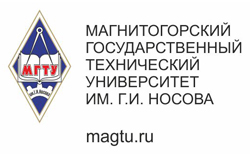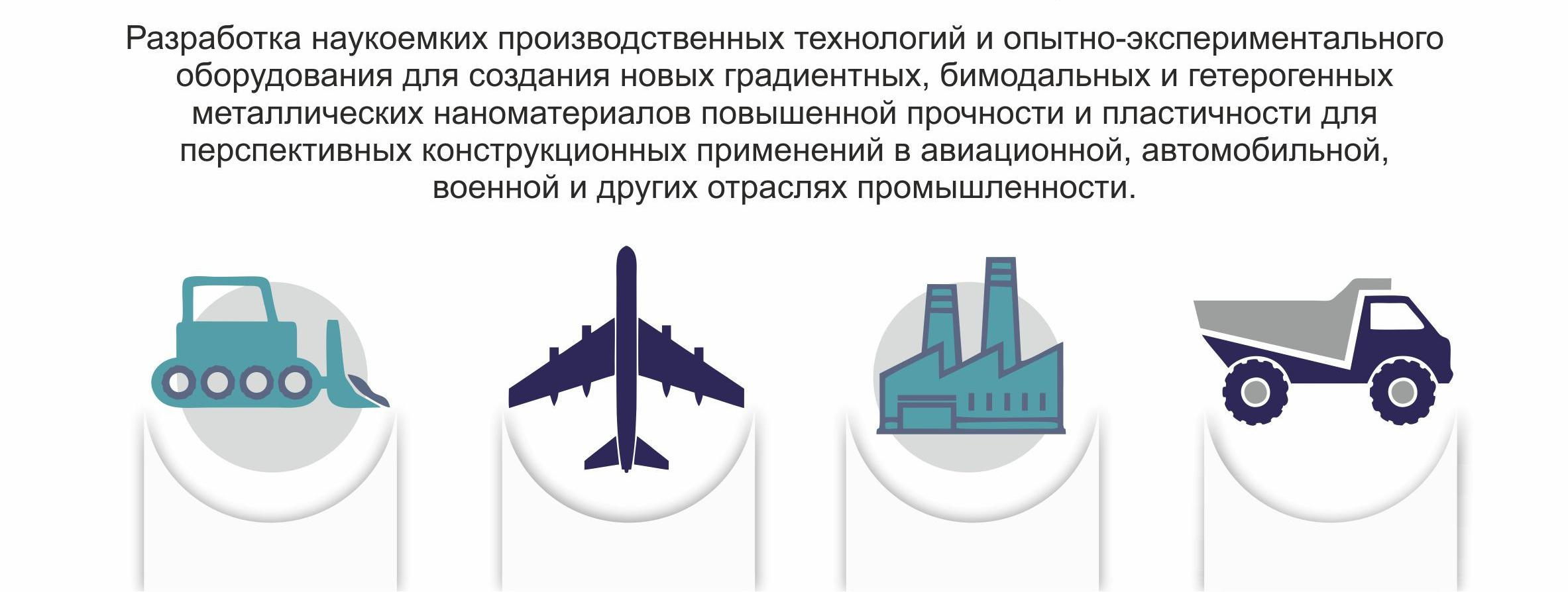Goal
Development of knowledge intensive production technologies and testing equipment to engineer new gradient, bimodal and heterogenous high-strength and high-ductility metallic nanomaterials for innovative structural applications in aviation, automotive, military and other industries.
Objectives
- Develop and test advanced nanostructuring deformation techniques of asymmetrical rolling, asymmetrical cryorolling and asymmetrical accumulative rolling, which rely on severe plastic deformation and non-monotonic processing, to produce gradient, bimodal and heterogenous high-strength and high-ductility nanomaterials;
- Understand how special structures can be obtained in metals and alloys depending on the type of strain (shear, elongation or compression) and the hydrostatic pressure; the type of crystal lattice and the stacking fault energy; the impact of dislocation slip and twinning or rotational deformation modes; the kinetics of phase transformations, precipitation and dissolution of particles, segregation induced by severe plastic deformation; the initial processing temperature and the heat impacts that occur as a result of strain and when the tool stays in contact with the workpiece, as well as heat dissipation; the impact of subsequent heat treatment;
- Develop the grain boundary engineering approach, including ways to control the grain boundary structure, lessen nonequilibrium and grain boundary segregation by varying severe plastic deformation modes in combination with heat treatment (including cryogenic treatment) in order to obtain new gradient, bimodal and heterogenous high-strength and high-ductility nanomaterials; carry out experimental studies using advanced techniques of qualifying the microstructure and mechanical properties of test materials, such as TEM, SEM, EBSD, X-ray diffractometry;
- Develop deformation-induced grain refinement models to describe the relationship between the vector and non-vector characteristics of deformed metal, the structural imperfections and mechanical properties of metals and alloys;
- Develop the asymmetrical rolling technology which produces a gradient nanostructure (grain size, dislocation density, texture, non-equilibrium grain boundaries, nanotwins, grain boundary segregations, nanoparticles) in metals and alloys; with the help of multiscale modelling (at macro-, meso-, and micro-levels) and experiments, understand the correlation between different gradient structures and strength-ductility in nanometals;
- Develop the asymmetrical cryorolling technology which combines extreme shear and compression strains at cryogenic temperatures (from -153 to -196 ºС) and produces a bimodal structure consisting of a submicrocrystalline (100-500 nm) matrix, which defines strength, and “big” micron grains (1-3 microns), which define ductility; conduct theoretical and experimental studies to understand about the formation and evolution of bimodal structures and establish the relationship between the methods and conditions of treatment and the concentration of “big” micron grains in the submicrocrystalline matrix;
- Develop the asymmetrical accumulative rolling technology to produce heterogenous metallic nanomaterials (double-layer and multi-layer composite nanomaterials) with different layers: ultrafine-grained, gradient, bimodal, coarse-grained; understand how the structure and the number of layers effect the strength and ductility in heterogenous metallic nanometals;
- Draft the project documentation, manufacture and test a prototype rolling mill – the first of its kind in Russia – for implementation of innovative techniques such as asymmetrical rolling, cryorolling, asymmetrical cryorolling, accumulative rolling and asymmetrical accumulative rolling, to produce prototype gradient, bimodal and heterogenous high-strength, high-ductility nanomaterials with enhanced fracture strength;
- Set up a research laboratory “Mechanics of Gradient Nanomaterials” at the NMSTU Institute for Nanosteels to ensure the results of research find practical application in real economy.





